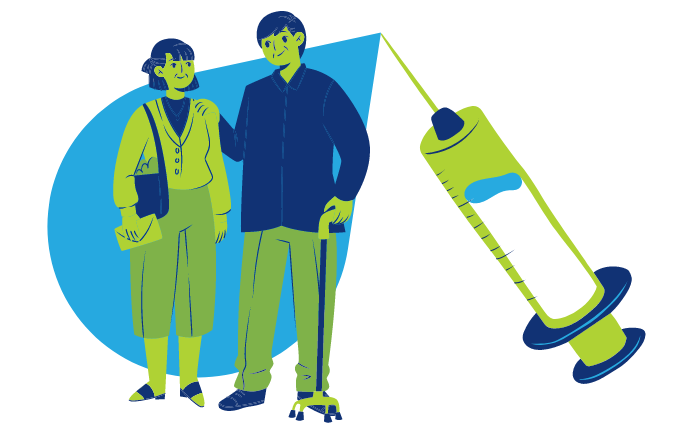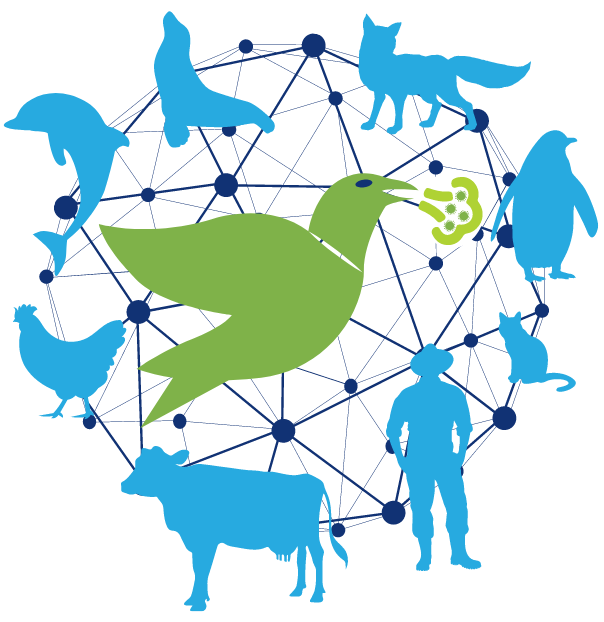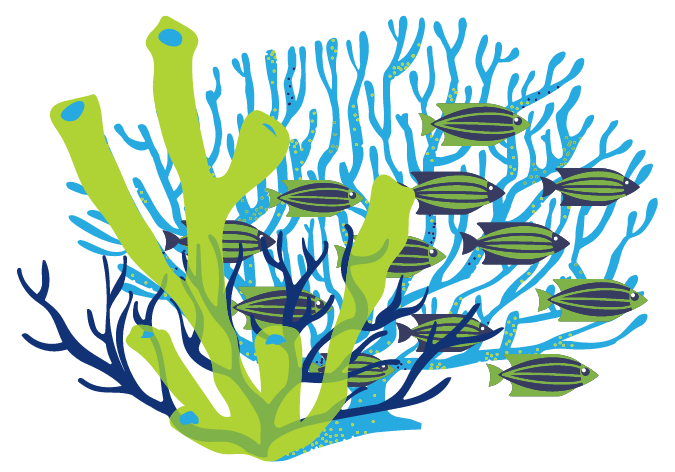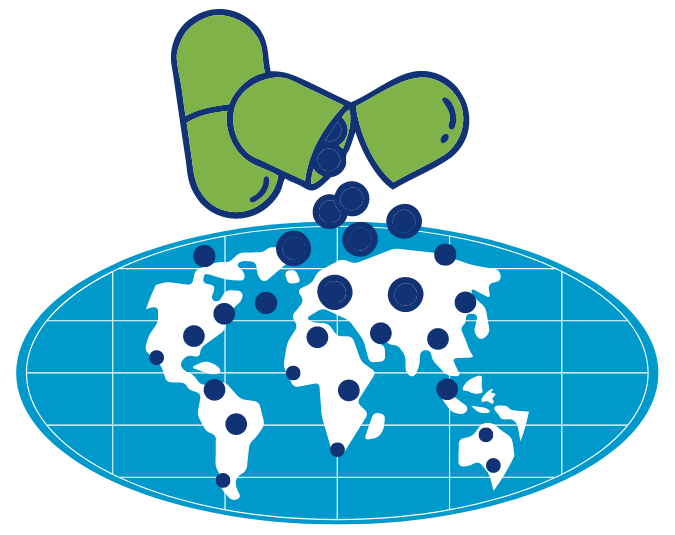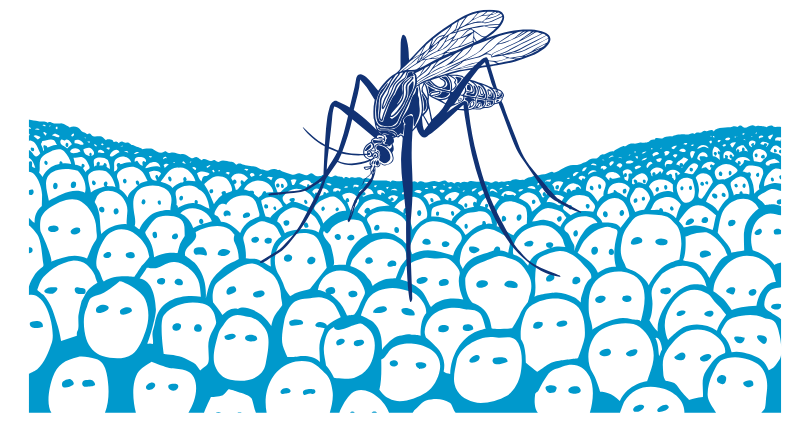
When Ebola virus was first spotted in west Africa at the end of 2013, few people were ready. The region had no developed or systematic health system, patients were scattered across remote rural areas, and other infections, such as malaria, were common and mimicked the early symptoms.
But a team in remote Kenema, in Sierra Leone, had been working to fight a different virus – Lassa Fever. They had set up a clinic with diagnostic testing and communications with the outside world. A team of experts had been trained in how to detect and diagnose viral hemorrhagic fevers. They may not have been expecting Ebola, but they had the expertise and some of the equipment and infrastructure needed to help people understand what was happening as the deadly and frightening virus started to spread across borders.
Dr. Robert Garry, who specializes in viruses, had helped set up the team studying Lassa in west Africa. He helped the world understand what was going on with Ebola and quickly understood that his team’s preparations in Kenema had helped in the fight to track and control the virus.
Such preparations also helped when COVID-19 started spreading around the world in 2020.
In this episode of One World, One Health, listen as Dr. Garry explains how he got interested in studying viruses and how preparedness matters in fighting global threats.
Maggie Fox
Hello and welcome to One World, One Health with the latest ideas to improve the health of our planet and its people. I’m Maggie Fox. All of us here on Planet Earth are facing problems such as pollution, climate change, and infectious diseases both old and new. This podcast is brought to you by the One Health Trust, with bite-sized insights into ways to help.
The name of this podcast is One World, One Health and the concept is simple. The world is one world and all of us living here, animals, plants, and people, are connected. Climate’s global, and a problem anywhere can become a problem everywhere. This has become so very clear to us in the 21st century, with outbreaks of Ebola causing worldwide panic, smoke spreading across continents from wildfires in often remote places, and of course, the COVID pandemic. But preparation and forethought can help limit the damage. One of the best examples happened in Sierra Leone, where global health experts had been working for years to set up clinics to help fight a fairly local problem: Lassa fever. Those clinics were priceless when Ebola broke out in West Africa in 2014.
Today, we’re chatting with Dr. Robert Garry, Professor of Microbiology and Immunology at Tulane Medical School. Dr. Garry helped set up clinics, lab facilities, and infrastructure to study and battle tropical diseases in Sierra Leone, and found that hard work paid off first with the Ebola epidemic, and then when COVID spread. Bob, thanks so much for joining us.
Robert Garry
It’s my pleasure.
Maggie Fox
Bob, can you tell us why a professor working at a university in Louisiana would care about a rare tropical disease halfway across the world in West Africa?
Robert Garry
Well, it goes back to the time when I actually just started in graduate school. I went to the University of Texas in Austin, in the microbiology department. I knew that I wanted to study viruses. But it turns out, within the first week or so, I walked over to the library and there was a book there, it was called “Fever.” And I read it and I was kind of hooked on these emerging viruses right away because it was a fascinating story. It was very well told. I thought to myself, this is the kind of work that I wanted to get into. Well, I didn’t get into it right away. There was another emerging virus that came and that virus everybody knows about, it’s HIV, the human immunodeficiency virus, the virus that causes AIDS. So I worked on that for about 20 years.
And then, there came an opportunity [following] the Twin Towers that came down and the anthrax letters, when the NIH and other agencies started funding work on emerging viral diseases and biothreat agents. And so that became an opportunity to sort of pivot a bit and work on a virus that I’d always been interested in since I read that little book back in the University of Texas Library: Lassa virus, the virus that causes Lassa fever in West Africa.
Maggie Fox
Why should a professor in Louisiana even care about these things? What’s it got to do with people here in the US?
Robert Garry
Well, we live in one world, a theme you’re trying to develop here, and it’s absolutely true. I mean, threats that have emerged in one part of the world can often reemerge in other parts of the world. We saw that during the Ebola outbreak that had never actually been in West Africa before 2013, but it came to us, really, [from] a thousand miles away.
We saw cases of this other hemorrhagic fever virus Ebola in the little country that I was working in, Sierra Leone. And that outbreak actually, of Ebola, spread throughout West Africa and ended up infecting people across the world, including in Europe and several cases in the United States. Things that happen in any part of the globe because of international travel and the way we’re all interconnected can affect this quite dramatically.
Of course, we saw that with SARS-CoV-2, right? I mean, a virus that broke out in a city in China quickly spread, this virus [was] much more transmissible even than Ebola. SARS-CoV-2 quickly spread around the planet and we had devastating consequences from that.
Maggie Fox
So tell us about what you were doing in Kenema in 2013-2014.
Robert Garry
We were working on Lassa virus and there had not been a lot of work done on Lassa virus because as you said, it is something of a local problem there. It just affects people in West Africa, but across a pretty broad stretch of West Africa, all the way from the west part of West Africa over to Nigeria and perhaps even farther.
We knew that that virus is also something of a threat in terms of a bioterrorism agent because you can imagine it’s a deadly disease. People develop very serious symptoms, they bleed from various orifices and it’s a highly fatal disease [with an] about 70% fatality rate. We knew that this was a potential bio threat but also a public health threat as well. Those dual threats are agents that you really do want to work on and figure out what’s going on.
We were first designing what we call countermeasures, and the first one is a diagnostic assay. You need to be able to tell if the person that you’re dealing with actually has the disease. In
West Africa, there are a lot of diseases that cause fevers and that’s the initial symptom of Lassa fever, of course, it sounds like it, right? And so just telling whether your patient might have Lassa fever is important, especially early on, because then you can design better treatments [and] get the patient that kind of advanced, intense care that they need to try to survive this disease.
Maggie Fox
So tell us how that preparation helped pay off in 2014.
Robert Garry
We had a lab set up already there in Kenema, at the Kenema General Hospital in Sierra Leone, at the very heart of Lassa fever country in Sierra Leone, and in fact, one of the hotspots in West Africa. We had laboratory infrastructure set up there already. We had trained doctors and trained nurses that were ready to treat hemorrhagic fever patients.
Now the unfortunate part of that is, many of these people contracted Ebola when Ebola came to us and a lot of my colleagues actually in Sierra Leone that I had been working with for at that point about a decade. The head doctor, a gentleman named Umar Khan, basically the only Sierra Leonean virologist in the country at the time, and our head nurse and several other nurses and people that worked at the hospital, unfortunately, contracted Ebola. So it was a major incident for us, but certainly also for the people of Sierra Leone and the rest of West Africa.
Maggie Fox
And did these preparations help in detecting the spread and then the eventual control of Ebola?
Robert Garry
Well, unfortunately, it didn’t really help us stop the spread very much, because this is a pretty infectious virus. And once it really had started to spread in West Africa, there was really not much people could do. Now, it did help us in other ways. I mean, we actually learned something about the disease that had not been learned before during previous outbreaks. There had been over 40 outbreaks of Ebola before the virus came to West Africa, but they had been in small villages.
Obviously, in those villages, [there was] no sophisticated research infrastructure. We had that in Kenema, we were able to do some early analysis of the patients who had come in, and very significantly, we were able to actually collect samples and do viral genomic sequencing basically in real time.
It’s hard to sort of think back, even though it’s been about 10 years, but it’s hard to think back, and that was pretty unusual. I mean, it was the first time it had really been done in an outbreak situation like that, that is to get the viral genetic sequence in real time. We’re used to it now with the SARS coronavirus pandemic, that basically people are sequencing thousands of genomes each week and learning a lot of important things about the variants and how they have arisen
and how they might impact your immune system. But when we did that in the West African Ebola outbreak, it was kind of groundbreaking, I think, and people learned that, yes, the viruses do mutate.
We actually identified a mutation that probably helped this virus spread in West Africa. It basically pointed to the fact that, yes, genomic sequencing is an important tool that you can use in an outbreak situation.
Maggie Fox
And then did this pay off again with COVID?
Robert Garry
Well, certainly, yeah. I mean, people didn’t immediately realize that yes, you could do genetic sequencing and track the virus, see where it’s spreading, see how it’s changing, see how the variants might be interacting differently with the human immune system or transmitting differently, and identify mutations, say in the receptor binding domain, that helped the virus bind better and do transmission or pathogenesis differently. We don’t know a lot yet and we don’t know enough, but it’s certainly a very promising way to go about analyzing the virus, and it’s become a very important tool during pandemics.
Maggie Fox
Tell us what you’re working on now.
Robert Garry
Obviously, when you’re in an outbreak situation, you work on the virus that is being spread. So we did some coronavirus work and did some diagnostic assays. We actually looked in Sierra Leone to see if we could find any evidence that the virus might have been there before. And we didn’t actually find evidence that SARS itself had been there, but we do think that there are some SARS-like viruses that probably have been spreading in West Africa much before the pandemic.
One thing you may now probably know is that Africa was, at least Sub-Saharan Africa, relatively spared from the SARS-CoV-2 pandemic. I mean, there were cases and it was a serious issue there, but it was not anything like we experienced in the United States or in Europe or anything like that. Sub-Saharan Africa had very few cases and very, very few deaths relatively speaking for the population.
Maggie Fox
And how can that help people elsewhere in the world?
Robert Garry
We’ll hopefully find these viruses. We’ll learn a lot more about coronaviruses, number one. But we’ll also learn what makes people protected because we certainly didn’t see the high case fatality rates. People were very worried about Africa, when this pandemic started to spread.
They were worried, okay, there’s places where there’s not good health care. There’s places where the infrastructure is not good to even detect the virus or do these things. And fortunately, it does seem like the people had some innate immunity against SARS-CoV-2.
Maggie Fox
And if you can study that immunity, that’s got to be good for helping come up with better vaccines, better treatments.
Robert Garry
Absolutely. That’s what we’re hoping for. The first thing we’re going to try to do is to find the virus and we have some leads, but not quite ready to say we found the actual virus yet.
Maggie Fox
And let’s be clear on this, these viruses emerge in nature, correct?
Robert Garry
Oh, absolutely. I think most of the viruses that eventually become pandemic and spread — and we’ve had a few of these recently, like the monkeypox virus, a little bit before that, Zika virus, and history is full of those going back to sort of my first entry into virology with the human immunodeficiency virus — all of these viruses have come to us from animals.
So it’s zoonotic transfer, that’s what we call it. The spillovers occur, and they’re occurring all the time, on a daily basis, and they come from animals like bats or rodents or other species. And not every virus that spills over has this pandemic potential.
We don’t really know enough yet to determine which of these viruses has the secret mix of ingredients that it’s going to do something like SARS-CoV-2 was able to do, that is spread around the planet and cause the chaos that that virus caused. But we’re looking, we’re trying to figure it out. This is sort of an overall goal of virologists, I think, to understand how these viruses are able to spill over and then take off.
Maggie Fox
Bob, thanks so much for joining us.
Robert Garry
It’s a pleasure. Thank you so much.
Maggie Fox
If you liked this podcast, which is brought to you by the One Health Trust, please share it by email or on social media. And let us know what else you’d like to hear about at [email protected]. Thanks for listening.
Ramanan Laxminarayan
Thank you for listening to One World, One Health, brought to you by the One Health Trust. I’m Ramanan Laxminarayan, founder and president of the One Health Trust. You can subscribe to One World, One Health on Spotify, Apple Podcasts, or wherever you listen to podcasts. Follow us on social media at @onehealthtrust, one word, for updates on One World, One Health and the latest in research on One Health issues like drug resistance, disease spillovers, and the social determinants of health. Finally, please do consider donating to the One Health Trust to support this podcast and other initiatives and research that help us promote health and well-being worldwide. Until next time.
Transcribed by https://otter.ai
Guest
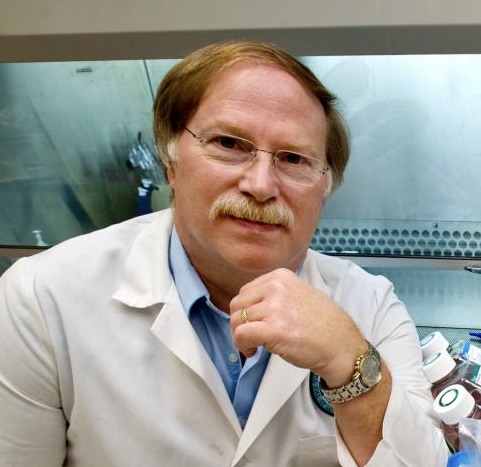
Dr. Robert Garry is a Professor of Microbiology and Immunology at Tulane Medical School and has published over 100 papers in the area of retrovirology.
Research in Dr. Garry’s laboratory focuses on a number of aspects of retroviral pathogenesis related to human immunodeficiency virus (HIV), a human endogenous retrovirus named human mammary tumor virus (HMTV), among other viruses. Dr. Garry is currently managing a consortium of scientists who are developing countermeasures, including diagnostics, immunotherapeutics, and vaccines, against Lassa virus, Ebola, Marburg viruses, and other high-consequence pathogens.
He has a PhD in Microbiology from the University of Texas at Austin.
Credits
Hosted and written by Maggie Fox
Special guest: Robert Garry
Produced and edited by Samantha Serrano
Music composed and sound edited by Raquel Krügel
Transcript edited by Aditi Satyavrath

